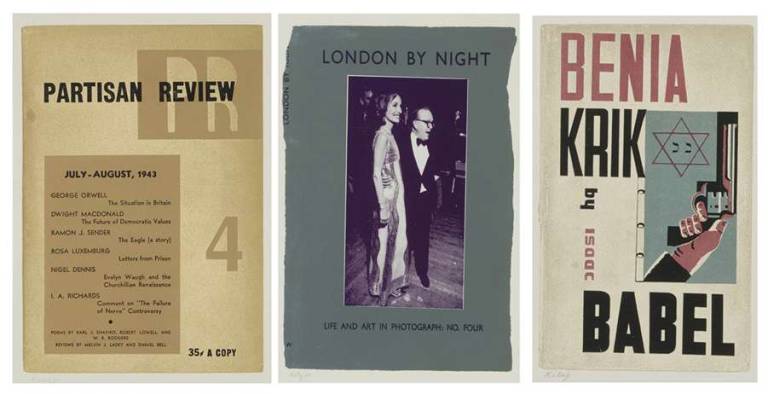Kitaj Under Cover

New exhibit judges an artist by his books
When I visit someone's home I am drawn inevitably towards their bookshelf. You can always learn something about a person by the books they read. The idea of creating a portrait through books, or to be precise, through the covers of books that someone has read is the central conceit behind the seminal project by R.B. Kitaj entitled, "In Our Time: Covers for a Small Library After the Life for the Most Part." It is a portfolio of 50 screen-prints produced in 1969, 33 of which are currently on display in "R.B. Kitaj: Personal Library"at The Jewish Museum.
Kitaj was an artist full of big ideas. He was an early British pop artist, working at the same time as David Hockney and Richard Hamilton. While Kitaj was primarily a figurative artist this specific project would later be seen as a sort of bridge from the 60's into the era of 70's conceptual art. While often sensual and emotional, Kitaj's work was always overflowing with intellectual questions and riddles. The notion that a person is the sum total of the books they've read, the information they've taken in, and by extension the choices they've made, turns this set of prints into an artistic mystery game.
What are we to make of the man who has chosen to read both The City of Burbank Annual report for 1968/9 and the collected Articles and Pamphlets of Maxim Gorky, Coming of Age in Samoa and a textbook entitled The Wording of Police Charges? Hints?are dropped? by the inclusion of The Jewish? Question and The Tower by W.B. Yeats. As you walk through the show each book adds another set of clues about the nature of the man portrayed. It is a fascinating and totally successful game; except for the fact that the curators have chosen only 33 of the 50 available images. One wonders why and how the choices were made of what to show and what to omit Pieces of the portrait are missing.
The project consists of large screen-prints based on photographically enlarged images of the book covers, bindings and dust jackets. Viewing the worn and torn edges of these mostly pre-World War Two editions, we see the history of Kitaj's relationship with these books and the beauty that age and handling has added to their already luscious old-world book design. The enlarged discolorations, delicate scuff marks, and deep elegant colors force you?to focus on how beautiful books used to be. By enlarging the scale of the book covers Kitaj has re-contextualized them as objects that carry the full weight of their original intent along with the bemused hipster coolness of Pop art. The mundane becomes precious.
The one jarring note to what is a strangely moving and beautiful show is a lackluster installation. The prints are hung on a dingy pale blue wall that feels institutional, making the room seem dull. One thing we know is that the man portrayed by "In Our Time" was anything but dull.
"R.B. Kitaj: Personal Library" runs through August 11 at The Jewish Museum. 1109 5th Ave at 92nd St.